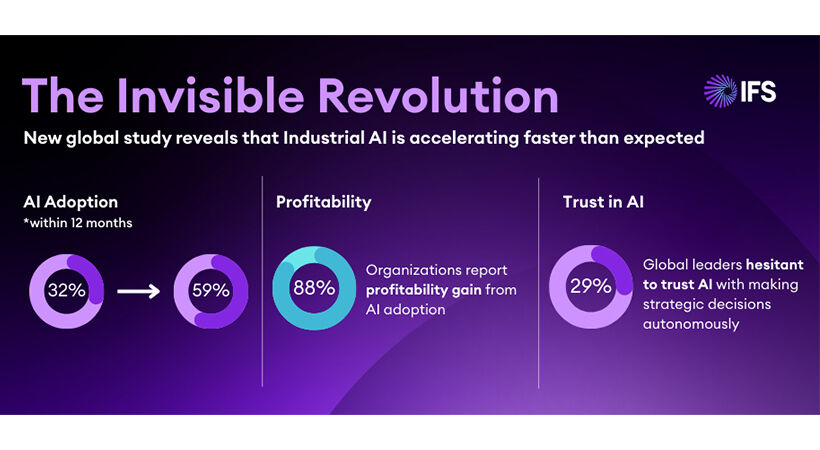IFS has released the results of its global study on the accelerating scale of Industrial AI adoption across asset-intensive industries. The study found that while organisations, particularly in the construction & engineering (C&E) industry, are adopting AI today, they are not fully prepared for its full implementation.
This has created what IFS calls the ‘AI Execution Gap.’ The IFS Invisible Revolution Study 2025* surveyed over 1,700 senior decision makers at industrial enterprises globally. The research identifies an ‘Invisible Revolution’: a rapid but under-recognised shift away from consumer productivity-led AI experimentation and toward embedded, operational AI across core business processes. But as with all revolutions, significant challenges in particular an AI Execution Gap are emerging.
The Execution Gap occurs when companies move faster into AI adoption than their staff are able to upskill, as is the case in the C&E industry. The study found that 91% of C&E organisations plan to increase AI investment in 2025, positioning the sector for accelerated adoption and scale. The sector also expresses lower levels of strategic concern about perceived barriers, in fact their highest concern is losing market share to faster AI adopters (52%).
Interestingly, 35% disagree that lack of employee knowledge will limit AI adoption, the highest response across sectors, suggesting a relatively confident workforce outlook despite reskilling needs. Still, 71% expect at least half their workforce will require retraining or reskilling.
“AI is a core driver of business performance, it’s time to plug the ‘AI Execution Gap’—bring people, process, and product together to deliver tangible outcomes,” said Kriti Sharma, CEO, IFS Nexus Black. “The pace of adoption is inspiring, but the next big unlock will come from scaling trust, strategy, and talent. Industrial AI is a powerful force for good, and we’re in a moment of opportunity: those who move fast will lead the next decade of industry.”
The research reveals a striking contrast at the heart of the AI surge. While the technology is already delivering impressive returns, most organisations remain unprepared to scale its impact.
More than half (58%) of C&E firms are creating AI implementation departments and the study clearly finds opportunities available to companies that embrace AI. Across the C&E sector 89% report profitability gains, and firms outperform the cross-industry average in operational efficiency (44%), supply cost reduction (42%), client targeting (37%), pricing efficiency (36%), and lowering project expenditure (36%).
So how do C&E organisations adapt to ensure they stay competitive? Training and upskilling—supporting employees to thrive in an AI-First environment will be key to ensuring that industrial companies remain relevant. The industry is poised for a large leap in maturity moving forward, 64% of organisations are projected to become AI-First within a year.
The IFS research signals a new stage of enterprise AI, no longer confined to innovation labs, but powering frontline operations. The next 12 months will be decisive as those C&E organisations that close the ‘AI Execution Gap’ now will shape the future of industrial leadership.
Kriti Sharma concluded: “We’re experiencing one of the most profound and underestimated shifts in global business. Industrial AI is here and already reshaping how entire industries run, compete, and grow. The time is now.”





